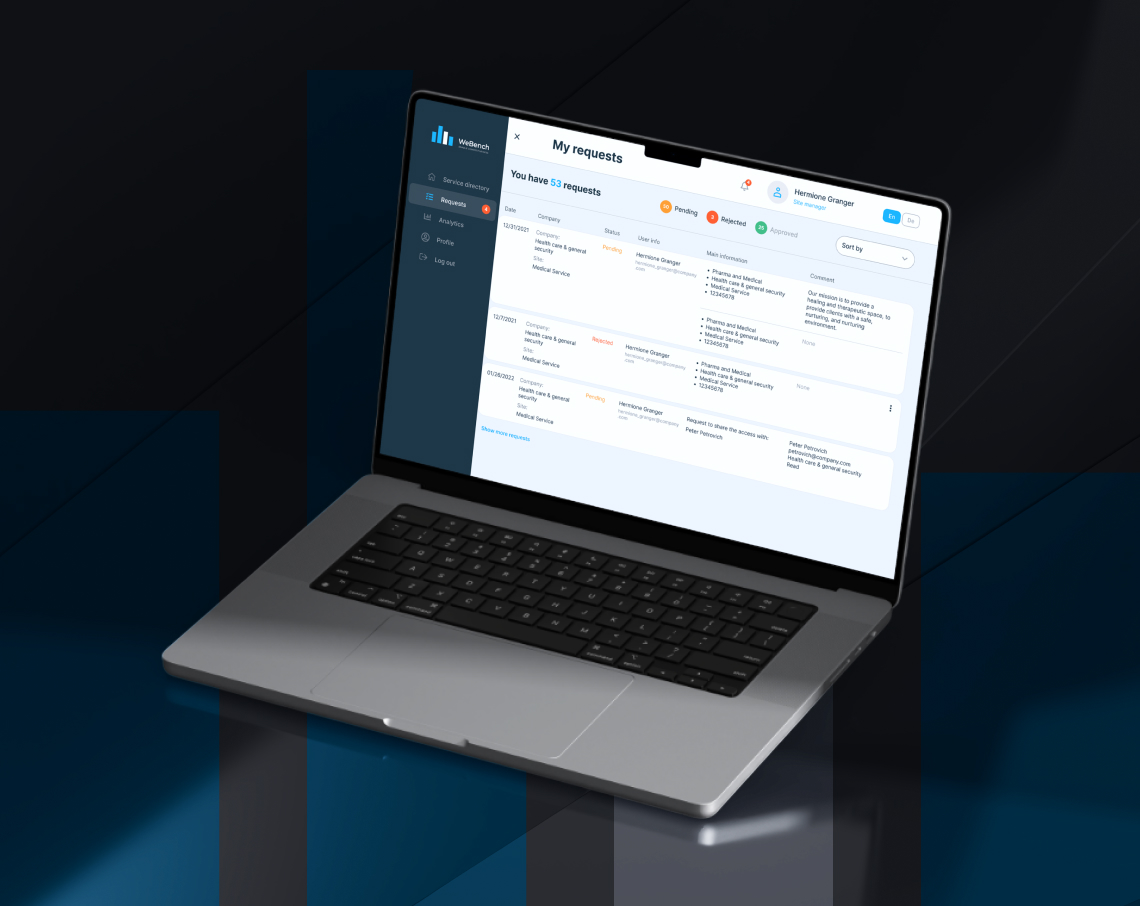
Implementing a B2B portal always attracts business owners and, with the right approach, makes employees' work more efficient and easier. The portal not only simplifies interaction between companies, employees, and clients but also opens up new opportunities for business growth and development.
For companies operating in the B2B sector, it is essential to use effective tools and services to outperform competitors and attract more clients. A convenient catalog, functional user account, simple and understandable price list, detailed product cards, and Electronic Document Management (EDM) — all of these can be implemented through a B2B portal.
In one case, implementing a B2B portal helps increase revenue, diversify it, accelerate interactions, and reduce errors caused by human factors. In another — significantly reduce costs through staff optimization.
In this article, we will discuss the opportunities that a business can gain by implementing a B2B portal. We will share our experience in developing such platforms and insights we have gathered from our clients.
A B2B portal is a platform where all participants in business processes meet. Each of them sees the features they need for their work. Repetitive tasks can be automated to increase efficiency.
A B2B portal simplifies interaction between sellers and buyers. Clients can independently choose products, place and pay for orders, track their status, and handle documents. The user account allows users to see all stages of a deal and manage them efficiently.
All operations on a B2B portal, from placing an order to payment, occur online and without intermediaries. It's a kind of self-service checkout with a set of handy tools. Employees do not need to send price lists, reserve products in the warehouse, or send paper documents. This approach increases the company's efficiency, allowing it to serve more clients quickly and without delays.
Industries where implementing a B2B portal will be particularly relevant:
If your company achieves an annual revenue of 100 million rubles and has a large staff for technical support or accompanying managers, it's time to consider implementing a B2B portal. This innovative tool not only automates business processes but also significantly increases your work efficiency, turning routine into productivity.
To «develop» or «not develop» — everyone places the comma differently. Choosing between a box solution and custom development of a B2B portal is ambiguous. A box solution, although a ready-made product, requires implementation and adaptation to the company's existing services. Custom development, on the other hand, offers a unique project that precisely meets business needs.
At LightTech, we offer both ready-made box solutions and custom developments, selecting the optimal variant based on a detailed business audit. Our experience includes successful projects where box solutions based on ready-made components yielded significant results. When necessary, we also create unique solutions using hybrid models for maximum efficiency and adaptation to specific business tasks.
Before implementing a B2B portal, several tasks need to be performed to increase the platform's efficiency, avoid possible errors, and achieve the set goals. The table presents the main preparatory tasks carried out by the LightTech team.
|
Stage |
What's Included |
|
Requirements and Goals Analysis |
|
|
Formulating functional requirements for the platform |
|
|
Formulating technical requirements for the portal |
|
|
Ensuring security |
|
|
Resource planning |
|
|
Documenting requirements |
|
|
Preparing infrastructure |
|
|
Interface design |
|
|
Content planning |
|
|
Data upload |
|
|
Working on legal aspects |
|
Here are the main stages performed by LightTech in the framework of developing a B2B portal.
At this stage, we communicate with the client, ask them to fill in a brief and answer important questions. All this helps us understand the client's needs and goals and prepare a concept for the future product — determining what tasks the portal should solve.
Considering all aspects, we offer the client several options for achieving the goals. The client can choose the optimal strategy based on cost, timeline, and functionality. After that, the main priorities and tasks are determined based on the chosen option, and a work plan is drawn up, including a detailed TOR for specialists.
We conduct an in-depth company analysis to collect the maximum amount of data and prepare a roadmap for the project's implementation. The analytics phase includes tasks such as:
After that, we launch a pilot project: test hypotheses and get the first results.
Based on the results of the analysis and pilot project, we create an innovative product. After the development is completed, we successfully launch the portal into operation and provide its technical support. If necessary, we promptly make the required improvements.
We will talk about our experience in developing and implementing B2B portals. Business platforms deliver impressive results for our clients. For example, Bayer began to interact more effectively with product distributors and soon achieved the following results:
These results were achieved through the all-in-one concept. Distributors collected commercial offers in one place only with the latest data, uploaded customer bases, and made mailings. Upon a positive response, they formed a package of closing documents on the same platform. Bayer gained access to unique data, based on which they developed new lines of offers. This increased revenue and the average check. Read more about Bayer's experience.
Another example. We developed a B2B platform for a company engaged in selling petroleum products. The portal helped achieve such results:
LightTech not only develops B2B portals but also provides support after their launch. Our solutions will help you take your company to a new level of business process automation. Including assistance in implementing a B2B portal.
Thank you for your interest in our company. We are ready to replicate our experience, help you achieve excellent results like our clients, or attain higher goals.

Educe KPI and enhance your company’s competitiveness based on analyzing business operational data from 1000+ companies

Ecosystem of products for agricultural business in the concept of a "pocket farm"
